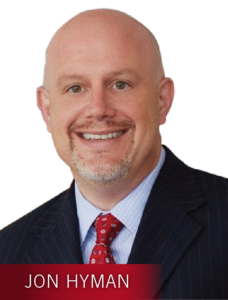It’s no secret that scores of technology-related jobs remain unfilled — some 500,000 open tech positions in the U.S., according to recent Department of Labor statistics.
Job-search engine Indeed surveyed more than 1,000 tech-hiring managers and recruiters late last year, with almost 9 of 10 respondents saying they found it challenging to find and hire workers with tech skills. Some 83 percent said the tech-talent shortage had hurt their business through lost revenue, slower product development and increased employee burnout. Google, which puts the number of vacant IT support jobs at around 150,000, is working with a Dallas-area community college to create an IT certification program, according to published reports.
The search-engine giant isn’t alone in finding creative ways to stock its tech staff. Even deeply rooted old-guard tech firms like IBM are exploring ways to fill the vast tech employee void.
IBM says it is prioritizing “capabilities over credentials” by investing in training and development programs. To further drive home the point, CEO Ginni Rometty has coined her new, growing labor force as “new collar” jobs.
One tech industry analyst and two tech executives offered their thoughts on this workforce trend.
Brent Skinner, principal analyst at Nucleus Research Inc., who covers human capital management; Kristen Brown, Kronos Inc. vice president, global talent acquisition; and Jen Crozier, vice president of corporate citizenship and president of the IBM International Foundation, spoke to Workforce for this Q&A.
Additionally, one new collar employee, Sara Moellenhoff, weighed in from the front lines of this new worker category. In this first Q&A segment, Crozier and Brown talk about the challenges tech companies face with a shortage of employees.
Workforce: Can you define new collar jobs and the capabilities you look for when hiring potential employees?

Jen Crozier: We see over half a million jobs open in technology but universities in the U.S. are producing only maybe one-tenth of that number of computer science graduates. And so we, like many other tech companies, have a whole lot of openings. As we think about skills we need, one of the realizations we had is that they don’t necessarily require a four-year degree. There are many jobs at IBM that require a four-year degree or post-graduate work. But there are also many that require a certain set of skills; we call them new-collar skills that maybe require a two-year degree or just different skill sets. We think the capabilities and the skills are even more important than the degree because things change so quickly in a lot of hot new fields: cybersecurity, analytics, cognitive, even things we’re doing within marketing or design.
WF: Why do you think the HR technology industry is having trouble hiring workers?
Kristen Brown: We’re operating in a candidate’s market right now. Unemployment is very low and the demand for technical talent is significantly outpaced by the limited number of technical professionals that are available. While it’s always competitive to recruit, hire and retain top talent, these conditions are creating a perfect storm. It’s an exciting time to work in talent acquisition.
WF: What challenges do you face since there aren’t enough people applying for tech jobs? How are you addressing those challenges?
Crozier: The priority is having the right skills and those are hard tech skills. So that could mean somebody who studied cybersecurity or analytics, if that’s the thing we’re hiring for. And then I think also importantly are the soft skills that go along with that. One of the things that I think is terrific about the P-Tech model, it’s not just that students are getting an associate degree in cybersecurity or cognitive, or analytics and the like, different computer science categories. It’s also that they’re developing really important deep skills of critical thinking, writing, problem solving, client relations, public speaking; things that will serve them over the course of their career. And that’s the kind of systemic reform that is so important for business today.

Brown: Despite the challenges of sourcing top talent in a competitive environment, the needs of our business do not slow down. Our engineering and technical support teams are working hard to meet the needs of our customers, so we need to work even harder to make sure the right people are in place on those teams so that we can deliver on our customer-first promise. Any compromise to key metrics like time-to-hire or quality-of-candidate is not an option.
WF: How are you dealing with this new change and hiring people with unconventional backgrounds for tech positions?
Crozier: The real challenge is just the skills, and are they available. So, there are 6.1 million U.S. jobs that employers can’t fill because they can’t find enough skilled workers. And we know that the four-year degree may be one way to get there but there’s just so many other ways to get there. And so we and the other companies are getting inventive and partnering with education leaders and government leaders to think about these new models. But I think the fundamental challenge is finding the right skills for the right job. We know that it’s important not only for young people, but for people to be able to reskill midcareer. Veterans are great examples of that. We have done training and certification on our i2 Analyze software, which is our cybersecurity software to get veterans up to speed and trained for cybersecurity jobs. It could be our tech rehire program for women who are returning to the workforce but want some training and certification to bring their tech skills up to snuff on things that have changed since they’ve been out of the workforce.
Brown: Partnerships are critically important. It’s vital to Kronos that we partner with organizations that connect us with or help us train the right nontraditional candidates. We’re spending more time on returnship programs, helping women and veterans return to the workforce after they hit pause on their professional careers to raise young families or serve our country. For example, we work with the Microsoft Software & Systems Academy, which provides technical training to active-duty military transitioning to civilian life. This training prepares students for a variety of technical careers, which makes them appealing candidates to companies like Kronos. We’re also looking at candidates from community colleges and coding boot camps. With the right internal training and educational opportunities, we’re able to develop these candidates to fit the needs of our organization.
WF: Why do you consider new collar jobs a good solution?
Crozier: What we know is that there are hidden pockets of talent and skills all over the place. We want to be tapping all different sources so we get a really diverse set of perspectives and skills. How do we move opportunity to that talent who may have been historically overlooked? They didn’t have access to education and entry-level interviews and we want to give them that access.
Brown: Kronos is highly supportive of new-collar jobs and candidates with nontraditional backgrounds. Whether it is a candidate’s job market or not, it’s always beneficial from a talent acquisition perspective to broaden the candidate pool in innovative ways. This helps to ensure candidates like returning veterans have access to opportunities that otherwise may not have existed. It also helps Kronos build diverse teams.
Nucleus Research Inc.’s Brent Skinner offers his thoughts on the new-collar trend, why it offers a positive solution and how he thinks it will reshape the workforce.
WF: Is the introduction of new collar jobs a trend you are seeing across the technology industry?
Brent Skinner: I’m unsurprised by the trend. Computer coding is a very specific skill and one could argue — first of all, far be it from me to question the logic behind getting a computer engineering degree, or a certificate or degree in that, for instance. But it seems to me that is something that can be taught outside of a university and that somebody could get to be very good at it without actually requiring a college degree. I’m not surprised that vendors are looking outside of university graduates for these skills given the shortage in the skill set. If organizations are investing in apprenticeship programs to train people with the potential to learn it, then I see that as being a wise investment for these organizations, especially with the tight labor market.
WF: Do you consider new collar jobs a good solution? Why?

Skinner: It doesn’t strike me as concerning at all. In fact, if anything it’s a smart move. Why throw dollars at your recruiting organization to go out there and find people with the university pedigree or credentials to do these jobs, when perhaps it’s less expensive to find folks that are interested in doing it and have the potential to learn it and then train them yourself? So, it’s sort of a return on investment.
WF: How do you think this new trend will shift the workforce?
Skinner: I think we may see in the future an evolution of types of jobs that require a university degree in order to gain access to potentially getting those jobs. I think we’re going to see a proliferation of apprenticeship programs, these sorts of things as organizations train people. You might see, and again this is sort of speculative, a diminishing role for the conventional university as an instruction in terms of preparing students for various types of careers. You may even see folks who go straight from high school to an organization on the promise they will be trained for a certain type of work that they’re interested in. When organizations offer to train new-collar hires, they’re probably increasing the likelihood that these employees will stay with the organization. In other words, they increase retention. So, you might see a diversification of what it means to be educated or trained and an increase in job opportunities for folks who may not wish to go the university route.
From the ROI standpoint I think that business is always looking for the most cost-effective way to get whatever needs doing, done. If organizations are going to experience better ROI by training workers for particular roles instead of throwing the money at their talent acquisition organization to find those folks, then I think that’s going to happen. This is an interrelated issue where organizations are probably trying to get the best out of their return on investment and talent acquisition technology is probably broadening the target pool of folks that they’re looking for, and then investing the additional money internally to train those folks. Obviously, somebody’s done a cost-benefit analysis somewhere and has found that this is cost-effective for them.
Sara Moellenhoff is one of a number of employees who is working at a job that isn’t related to her college degree. Moellenhoff, 26, was a preschool teacher from 2012-17. While teaching, she also worked part-time with a program that helps at-risk youth with behavioral problems and mental illnesses. Feeling like she had a lot on her plate, she started scouting for another job and found a three-month internship at IBM. The program, which started in April 2017, consisted of working in a rotation between the analytical team, project management team and server-build team. Her manager extended her internship for two more months and asked her to move to Atlanta, then asked her to stay on as a full-time employee. Now, Moellenhoff is the project manager at IBM in Columbia, Missouri, and keeps company servers up to date and tracks a team of administrators. Moellenhoff spoke about the challenges of changing careers from education to technology.
WF: Why did you decide to switch careers and what led you to IBM?
Sara Moellenhoff: I did exploring on different job sites because I kind of wanted a better life for myself. I was tired of working 70 hours a week at two different jobs and I wanted to settle down and have a normal, Monday through Friday, nine-to-five [job] and I just couldn’t do it anymore. So, I got really lucky. I applied for a whole bunch of jobs that I was qualified for with my degree in early childhood development and education. And then I threw in a couple ones where I was like, “Well it’s a risk, I’ll take it.” And IBM was one of them. I had never done anything computer- or IT-related in my life other than writing with Word. I just took a leap of faith and applied in January. And I didn’t hear anything back; I didn’t expect to, honestly, for a while. The end of February I got a phone call and they’re like, “We want to interview you.” I said, “OK, when can I be there?” And they’re like, “No actually we’re doing this new thing, we want to do it over the phone.” And I set up a phone interview, had my phone interview, and then two weeks later they asked, “Can you start in two weeks?”

WF: What was appealing about this job that it made you consider switching careers?
Moellenhoff: It was more so the fact that I knew I would have benefits that would be good. I would have a normal schedule. I wouldn’t have to worry about finding someone to replace me if I took time off. Because as a teacher you can’t just say, “I’m not feeling well, I’m not coming into work today.” These little babies are depending on you and they need you. And so you have to go to work. So, it was kind of nice knowing that if I needed something I knew I could get it from a corporation as huge as IBM and the fact that I knew that I was probably good for a pay increase. I love teaching, I really do. And I miss it every single day — it’s hard.
WF: What has this experience been like for you and how difficult is it to adjust to a new career?
Moellenhoff: In the beginning it wasn’t so bad because it was a lot of learning. I was in a classroom but on the other side of things. The biggest adjustment was packing up my life and moving to Atlanta because two weeks turn into four months really quick and I was living at a hotel and couldn’t even make my own food. I was working 14 hours a day, seven days a week. Flying on planes every other weekend, just to come home for a day to go back the next day. That was by far the most stressful and exciting thing I’ve ever done. So when I came back it was like a culture shock. I almost didn’t remember [how] to do anything in the office. But after a couple of weeks I got used to it and it was fine.
WF: After you were trained and were asked to stay, did you feel ready?
Moellenhoff: Yeah, I did. I was able to listen in on calls, and I had about 120 hours of training before I even started working with the analytics team. And a lot of it is just kind of listening and taking notes as you go. And we have a lot of online training as well.
WF: What were your hopes going into this job versus your hopes now?
Moellenhoff: Honestly, my biggest hope was that I would just learn a new skill and be able to apply it to whatever I decided to do in the future. I didn’t expect to stay past three months because I did not think I was what IBM was looking for at all. I’m untechnical, I don’t have a degree in science technology, engineering, math, whatever they’re looking for. When I wasn’t sure what was going to happen I just accepted the fact that it was a three-month internship. I’d take it, put it on my résumé and go find something else. So, it was pretty exciting to get to stay. Now, my hope is to study and get the hours for more certifications, become a better project manager and continue working on the accounts I’m on and strive for continuous improvement. I work really hard to implement agile practices in everything that I’m doing. I don’t want to be stagnant for long, I just want to make everything better.
Aysha Ashley Househ is a Workforce editorial associate. Comment below or email editors@workforce.com.
















 acquisitions, divestitures, an IPO or any other cause, CEOs and their surrounding teams know that attention to top and bottom lines is crucial. Truth in transformation lies in numbers. However, thriving through transformation requires people — the right people.
acquisitions, divestitures, an IPO or any other cause, CEOs and their surrounding teams know that attention to top and bottom lines is crucial. Truth in transformation lies in numbers. However, thriving through transformation requires people — the right people.